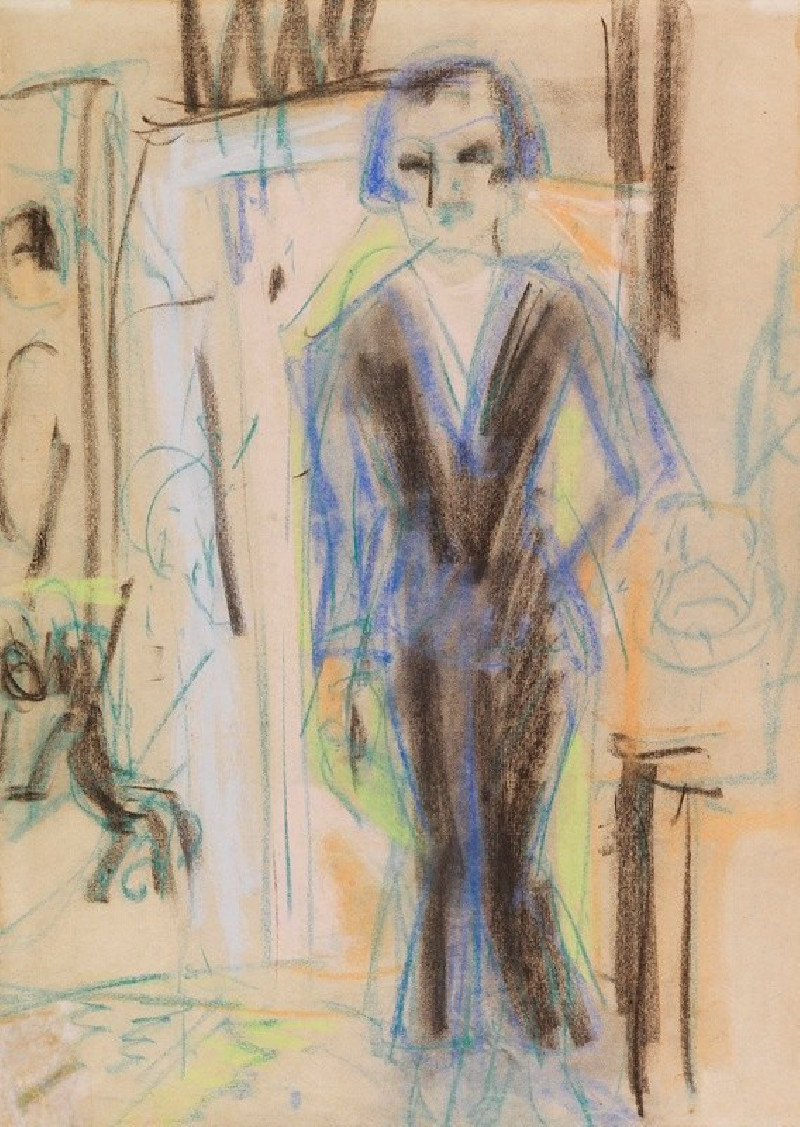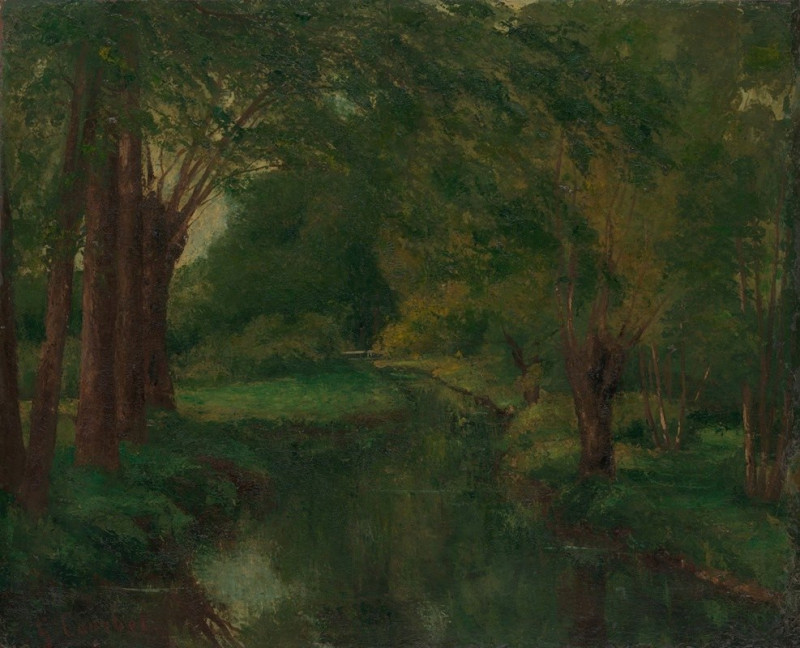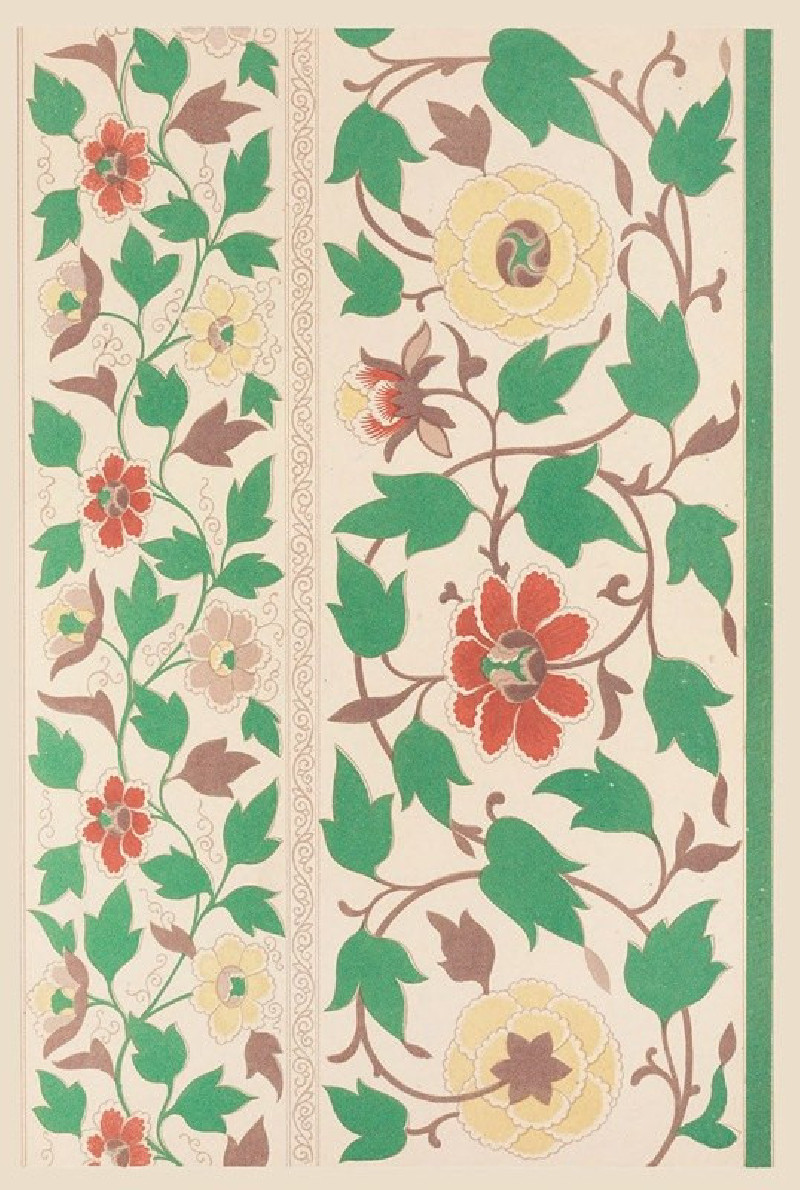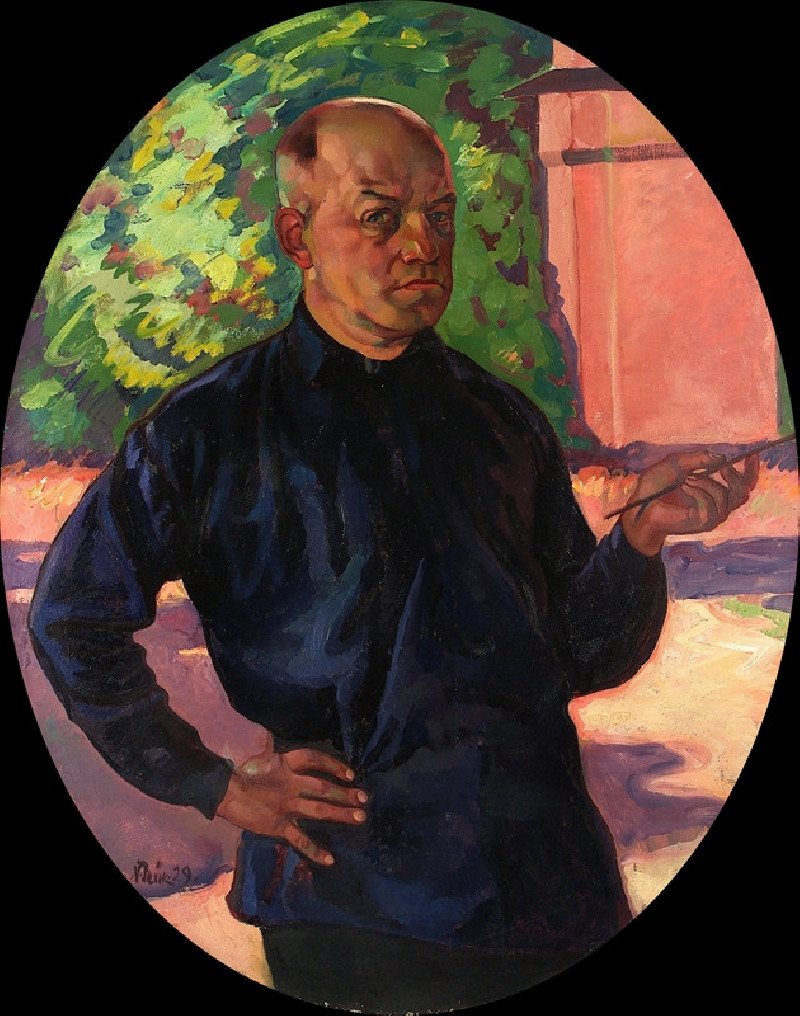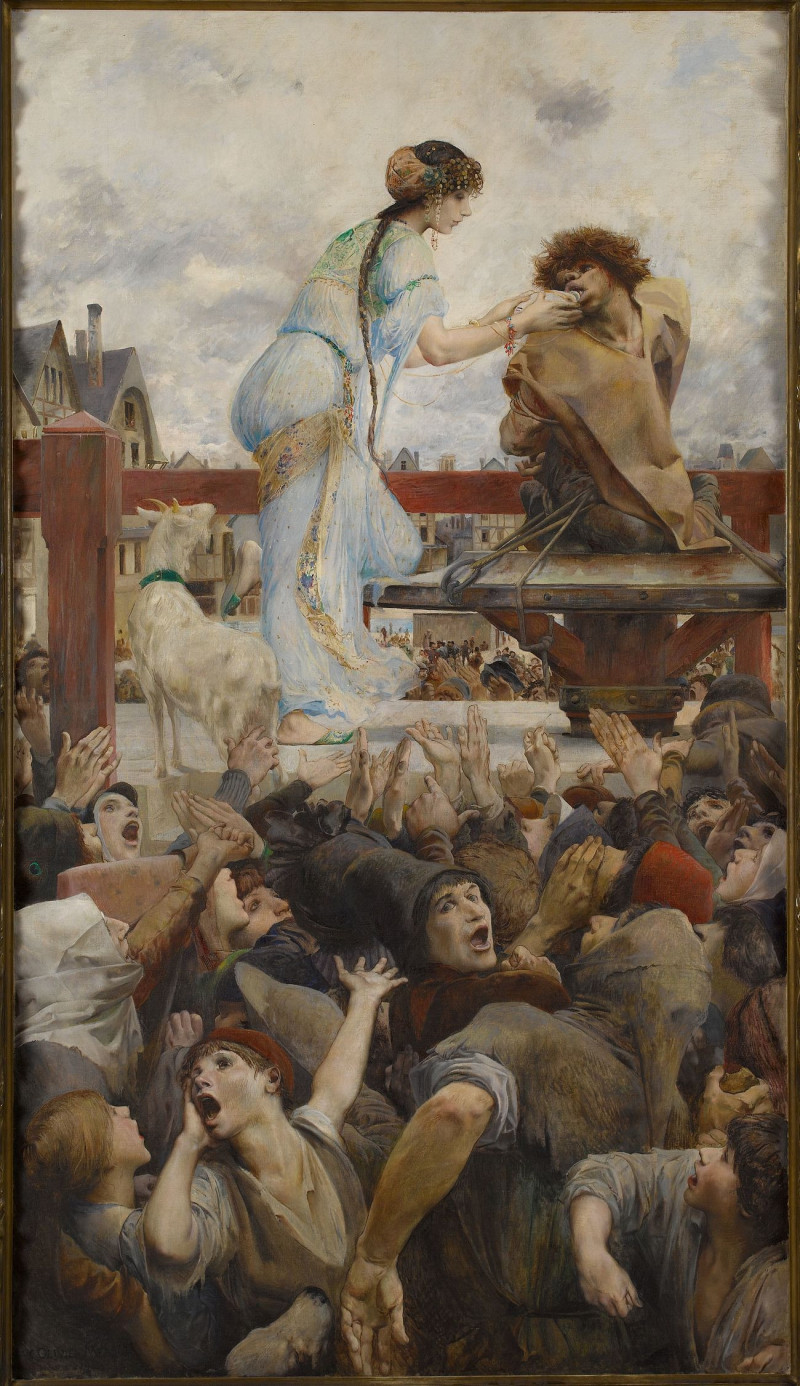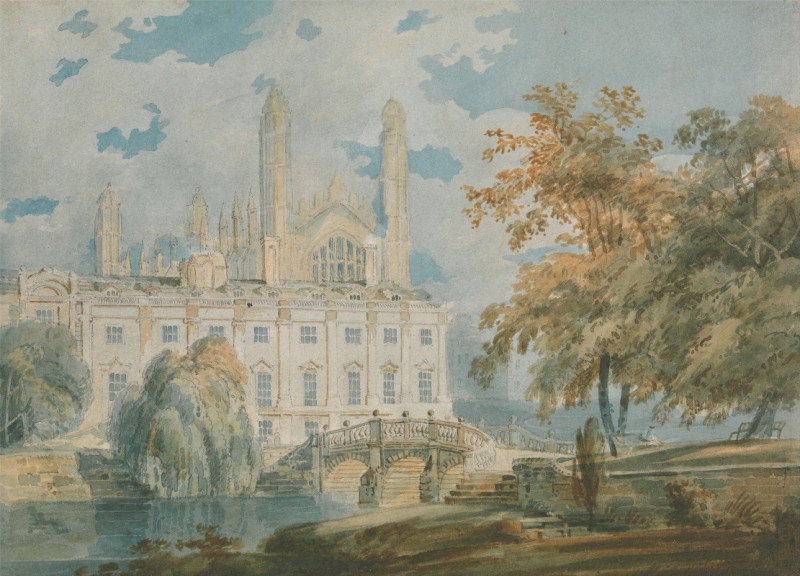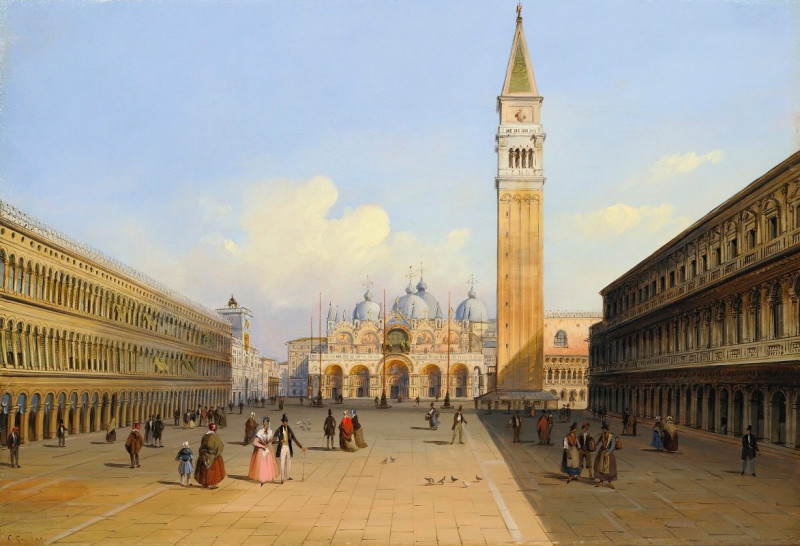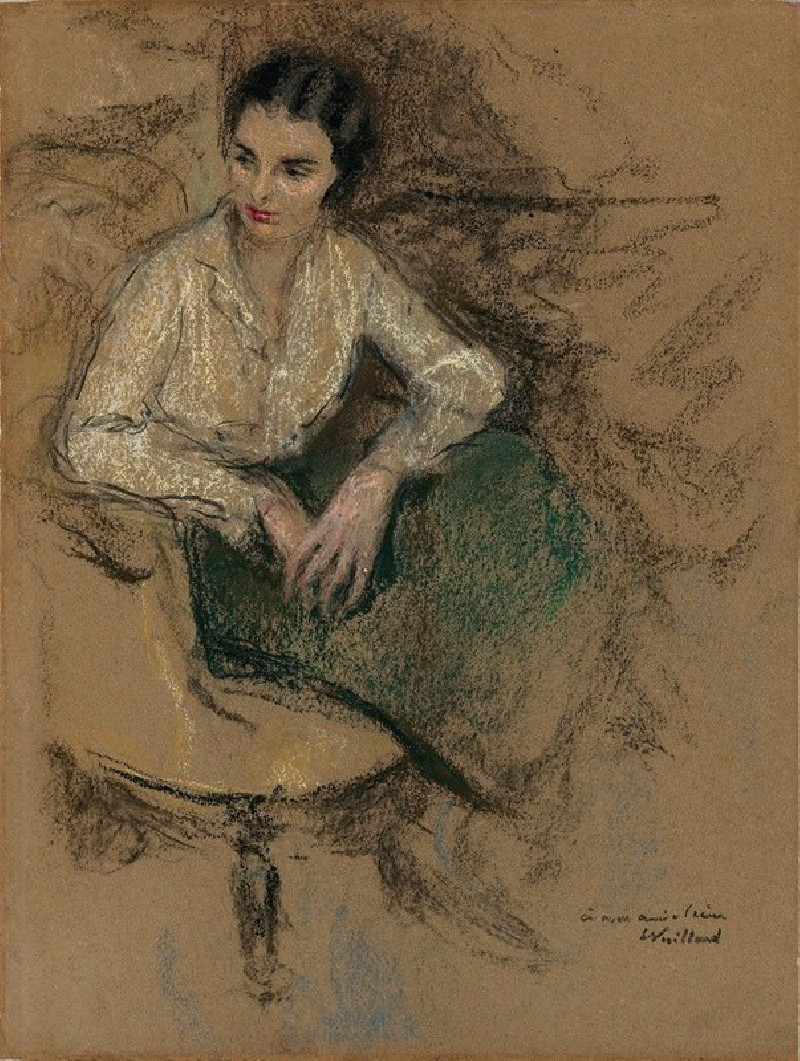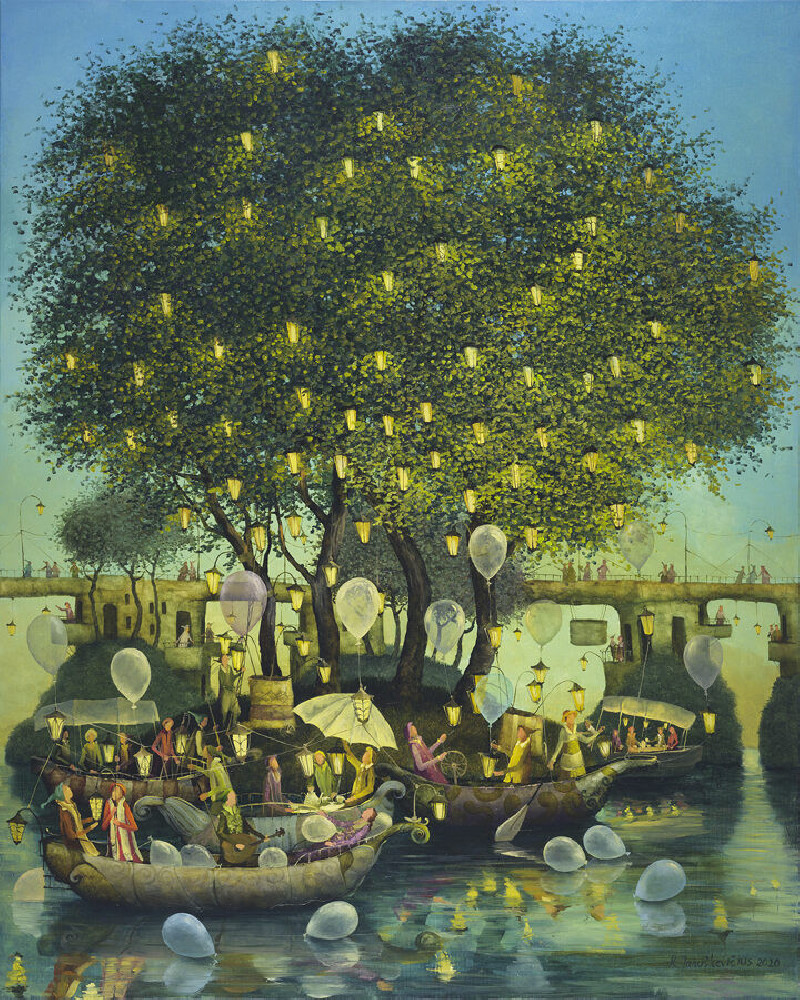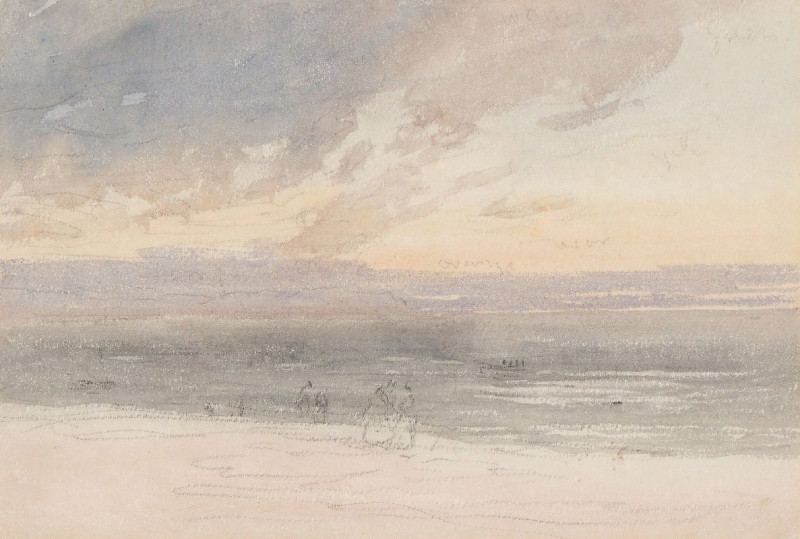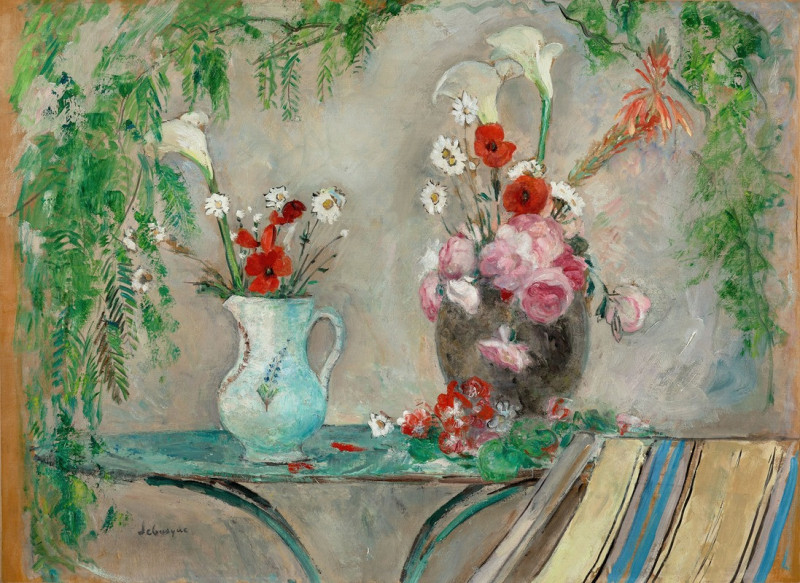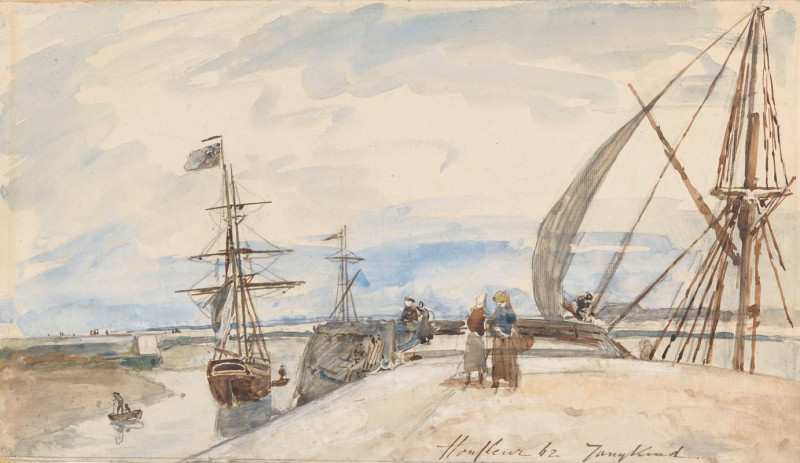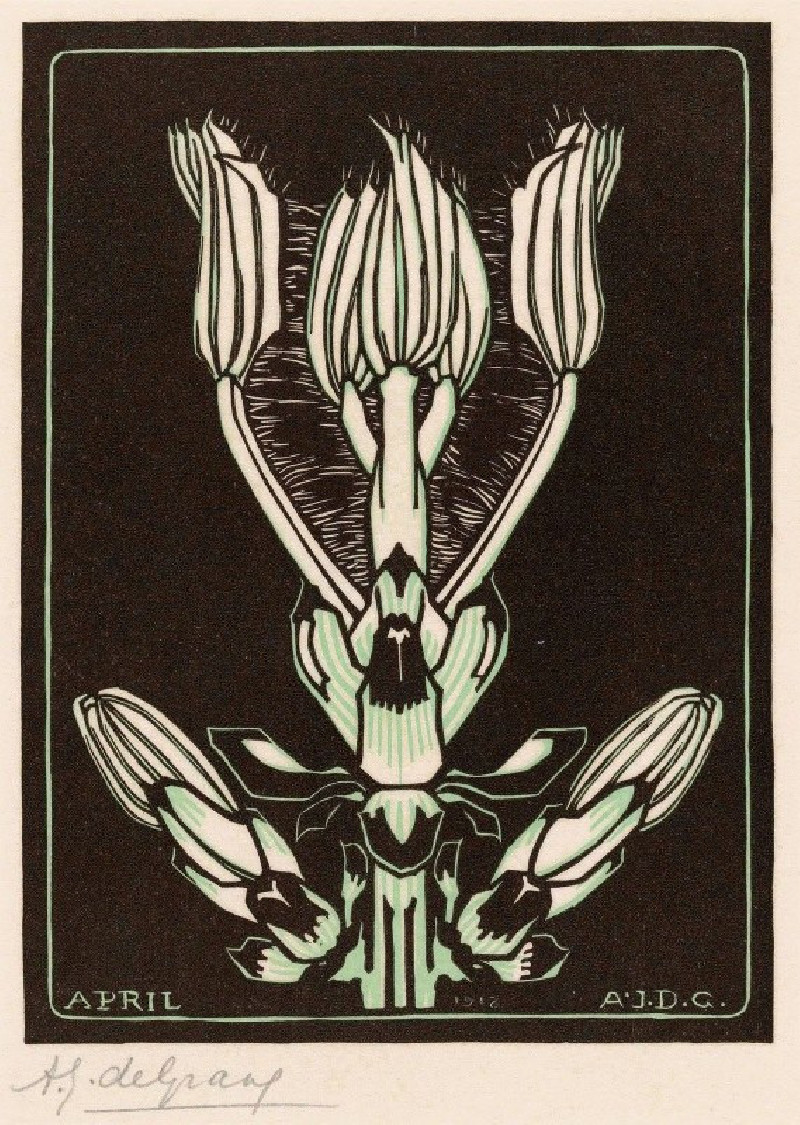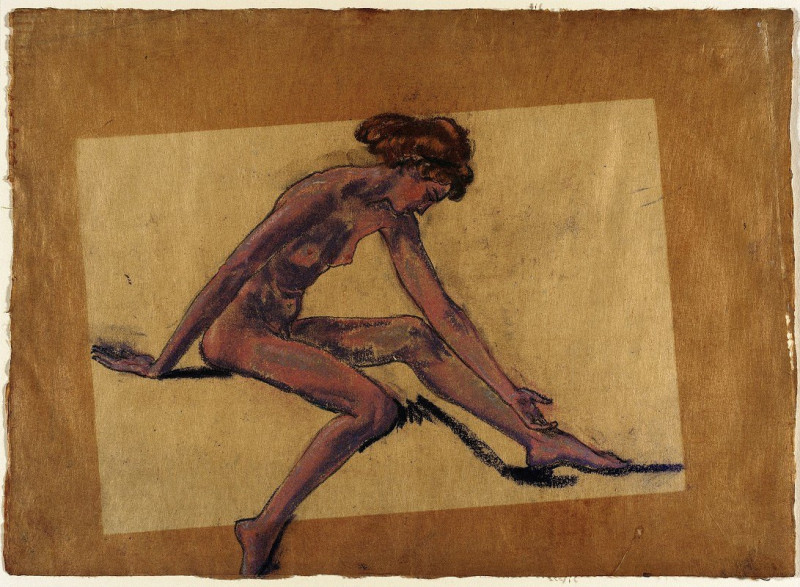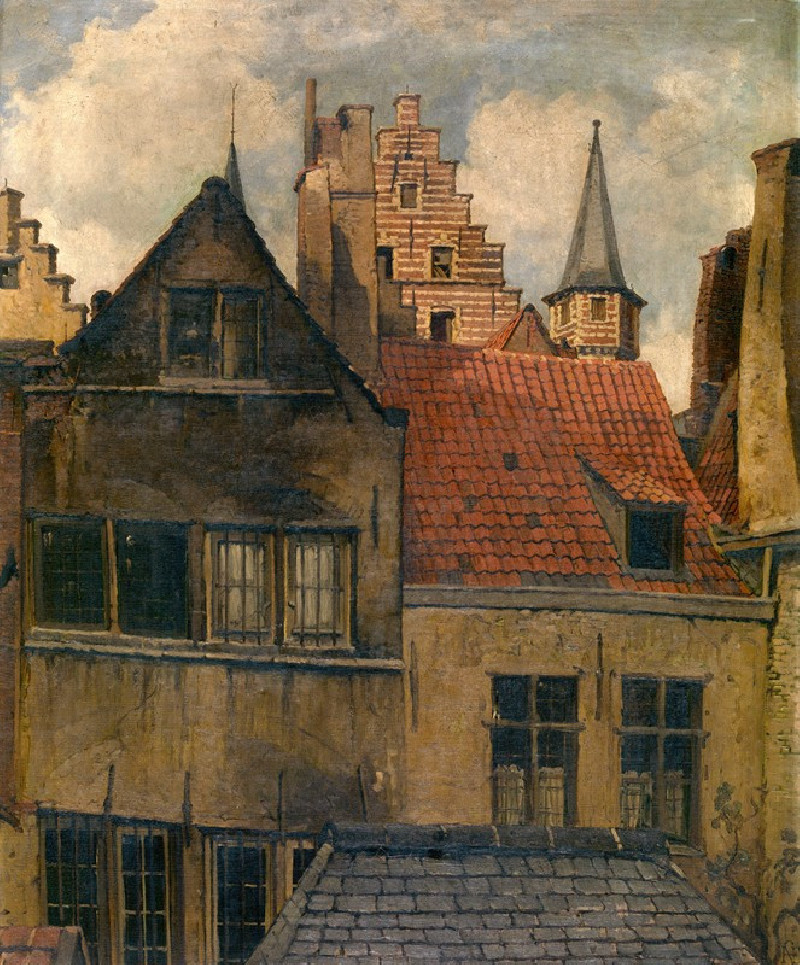Stehende Dame im Abendkleid (1918)
Technique: Giclée quality print
Recommended by our customers
More about this artwork
"Stehende Dame im Abendkleid" (1918) by Ernst Ludwig Kirchner is a striking example of expressionist art, depicting a woman dressed elegantly in an evening gown. Through his energetic and bold uses of color and form, Kirchner captures more than just the physical appearance of his subject; he delves into the emotional and psychological aura surrounding her.The composition's vibrant and unsettling color palette combines hints of blue, green, and black, creating a sense of depth and movement throughout the figure, which appears both in motion and boldly static. The woman's posture and the sharp angles of her dress suggest both elegance and a tense energy.The background features sketchy outlines of what appear to be architectural elements and objects, further giving the painting a layer of complexity and abstract quality. The almost ghostly forms arouse curiosity about the relationship between the environment and the woman.This painting, like much of Kirchner's work, is not merely a visual representation but an expression of the internal state of the subject and the atmosphere of the era.
Delivery
Returns
Ernst Ludwig Kirchner (1880–1938) was one of the most important German Expressionist painters. He was a co-founder of Die Brücke, a group of German expressionist artists formed in Dresden in 1905. Die Brücke and Kirchner took inspiration from Vincent Van Gogh and Edvard Munch, as well as African and Oceanic art. They used woodblock printing as a medium to showcase their signature style: flat, unrealistic images with vivid colors. The recurring themes in Kirchner's artworks included exotic cultures, faraway landscapes, self-portraits, dancers and Berlin street life. His paintings and prints effectively portrayed non-European cultures despite the fact that he never traveled outside of Europe.

